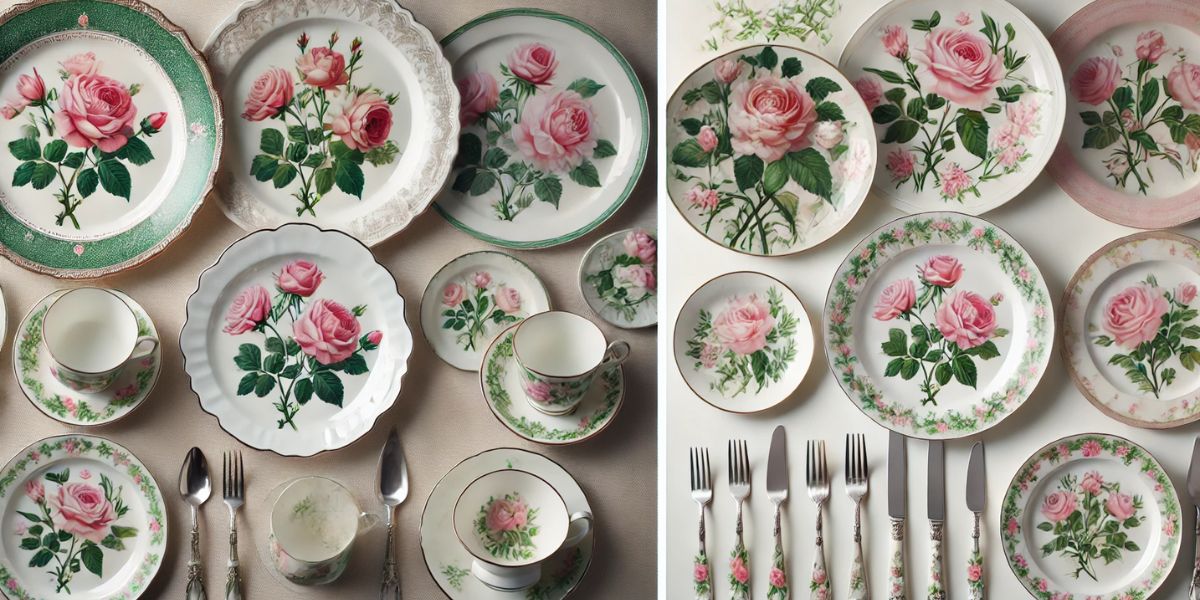Metlox Vernon Ware California Rose Pattern, founded in 1927 in Manhattan Beach, California, quickly emerged as a powerhouse in American ceramic art. Over the decades, Metlox’s innovative approach to design helped establish its reputation as a leading producer of quality dinnerware, with various lines that have captivated collectors and enthusiasts alike. Among these, the California Rose pattern stands out for its unique charm and artistic excellence. This article explores the intricate details of this specific pattern, aiming to shed light on its origin, cultural significance, and lasting impact on the ceramics industry.
Historical Context of Metlox’s Founding
Before delving into the California Rose pattern, it’s essential to understand the backdrop against which Metlox was founded. The early 20th century saw a burgeoning interest in ceramic arts in America, fueled by a desire for domestic production and artistic expression. Metlox capitalized on this trend by producing functional yet stylish pottery that appealed to American sensibilities. Their commitment to quality and design excellence set the stage for the introduction of several iconic patterns.
The Birth of the California Rose Pattern
The California Rose pattern was introduced at a time when Metlox was expanding its artistic boundaries. It is characterized by its vibrant portrayal of roses, meticulously crafted to reflect the natural beauty of California’s flora. This pattern was likely developed during the 1940s, a period marked by a mix of innovation and tradition in ceramic arts. The exact year remains a point of scholarly debate, but its stylistic features suggest a mid-century origin.
Artistic Elements of the California Rose Pattern
What sets the California Rose pattern apart are its design elements. The roses are rendered with a high level of detail, suggesting a blend of romanticism with the realistic art style that was popular at the time. The choice of colors, often a soft palette of greens and pinks, complements the delicate shapes of the pottery, making each piece both a functional item and a work of art.
Manufacturing Techniques
The production of the California Rose pattern showcased Metlox’s mastery of complex ceramic manufacturing techniques. The company employed advanced methods for molding, glazing, and firing, ensuring that each piece not only looked beautiful but also stood the test of time. This commitment to craftsmanship contributed significantly to the pattern’s popularity and its perception as a luxury item.
The Role of the California Rose in Metlox’s Catalog
Within Metlox’s extensive catalog, the California Rose pattern held a special place. It was marketed as a premium line, suitable for formal occasions yet durable enough for everyday use. This dual appeal was a hallmark of Metlox’s strategy, bridging the gap between high art and practical utility.
Cultural Impact and Popularity
The California Rose pattern did not just appeal to aesthetics; it also mirrored the cultural dynamics of mid-20th century America. Its popularity coincided with a post-war return to tradition and family values, where home décor played an essential role in expressing personal identity and style. As such, California Rose became a symbol of sophistication and elegance in American homes.
Collector Interest and Market Value
Today, the California Rose pattern is highly prized by collectors. The pieces are sought after for their historical value and artistic beauty. Over the years, the value of these pieces has appreciated, reflecting their rarity and desirability in the collector’s market. This sustained interest underscores Metlox’s enduring legacy in the world of collectible ceramics.
Preservation and Care for California Rose Pottery
Maintaining the beauty of California Rose pottery requires specific care. Collectors and owners are advised to handle these pieces gently and avoid harsh cleaning agents that might damage the glaze. Proper storage and display are also crucial to preserving their condition and vibrant colors.
The Legacy of Metlox and Its Patterns
Metlox’s contribution to ceramic arts extends beyond the California Rose pattern. The company’s innovative designs and commitment to quality have left a lasting imprint on the industry. As new generations of collectors and enthusiasts discover Metlox, the legacy of patterns like California Rose continues to foster appreciation for American ceramic arts.
Conclusion: Reflecting on the California Rose’s Origin and Significance
While the precise origin year of the California Rose pattern may remain part of its mystique, its impact is unmistakable. As we look back at the history of Metlox and its creations, the California Rose stands out as a testament to the craftsmanship and artistic vision that defined a century of American ceramics. This pattern not only adds beauty to collections but also tells a story of innovation, tradition, and the pursuit of excellence.
Frequently Asked Questions
1. When exactly was the Metlox Vernon Ware California Rose pattern first introduced?
- The exact year of introduction is debated, but it is widely believed to have been in the early 1940s, a period marked by a resurgence in domestic ceramic production and innovation.
2. What are the distinctive features of the California Rose pattern?
- The California Rose pattern is known for its detailed and realistic rose motifs, set against a subtle color palette that enhances the elegance of each piece.
3. Where can I find authentic Metlox California Rose pieces for my collection?
- Authentic pieces can be found through reputable antique dealers, online auctions, and specialty shops that focus on vintage ceramics.
4. How do I properly care for and preserve Metlox California Rose pottery?
- To preserve the integrity of the glaze and the vibrant colors, it is recommended to gently hand wash these pieces with mild detergents and avoid using abrasive materials or dishwashers.
5. Has the market value of the Metlox California Rose pattern increased over the years?
- Yes, the market value of the California Rose pattern has appreciated over time due to its popularity among collectors and its status as a symbol of mid-century American ceramic art.








